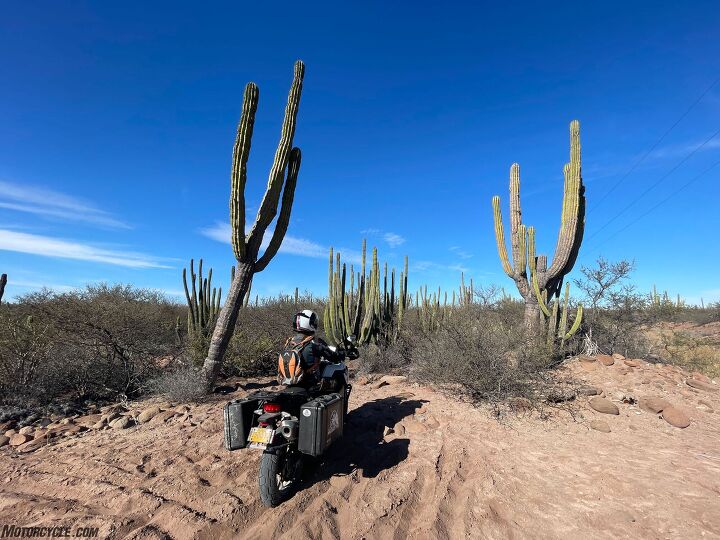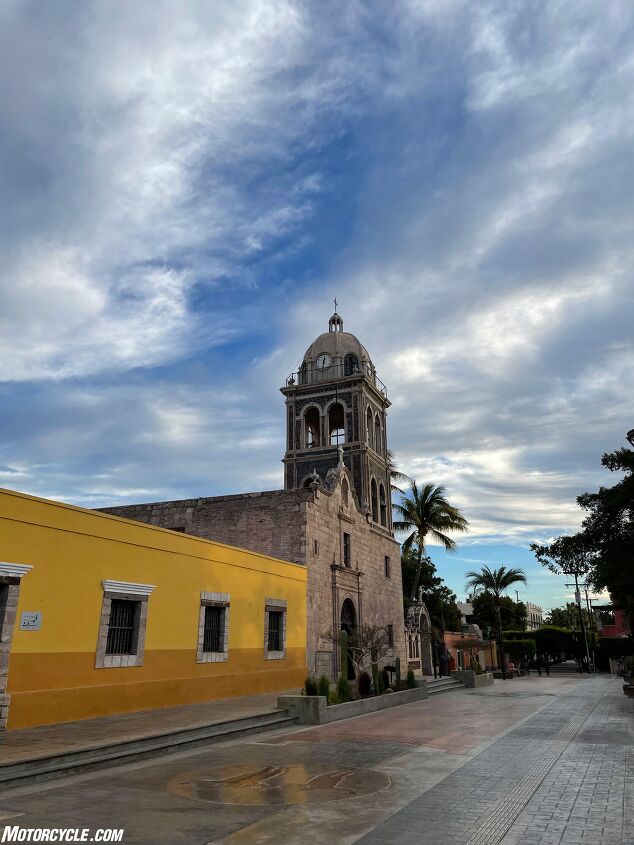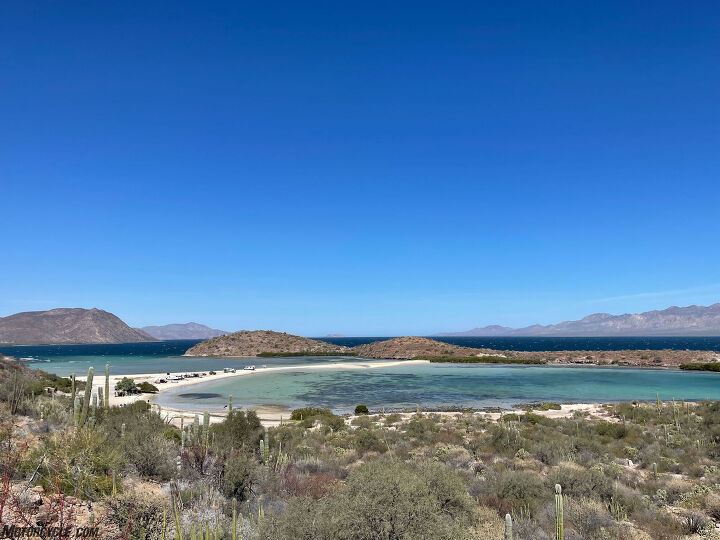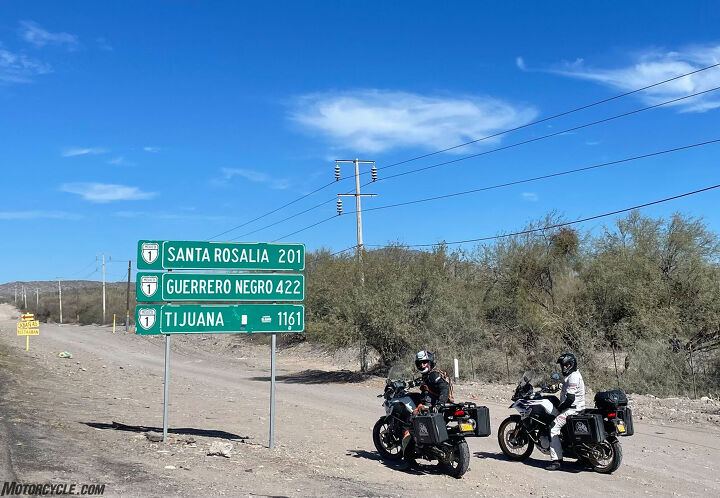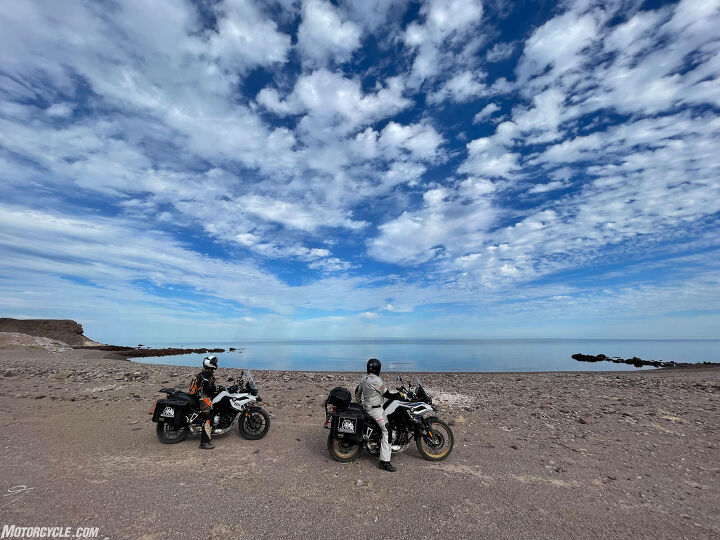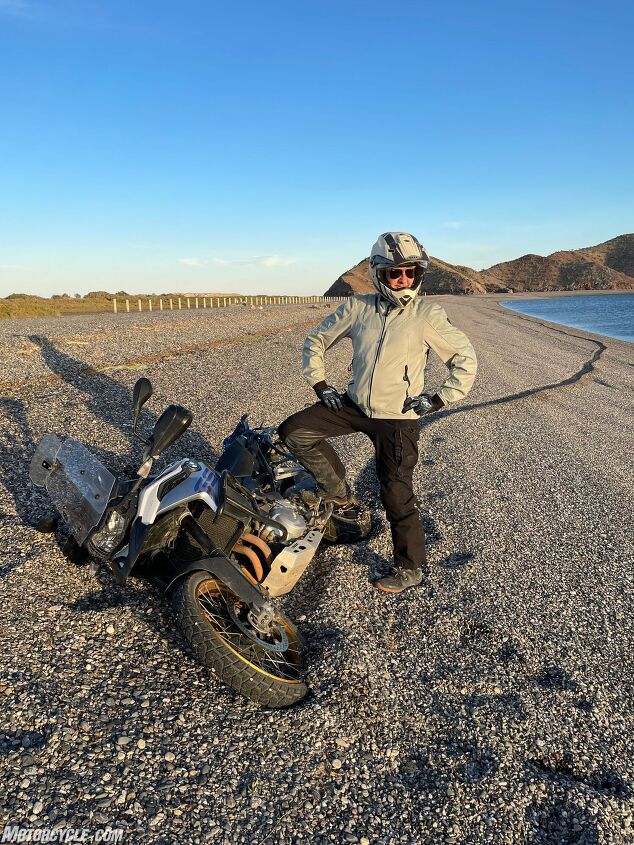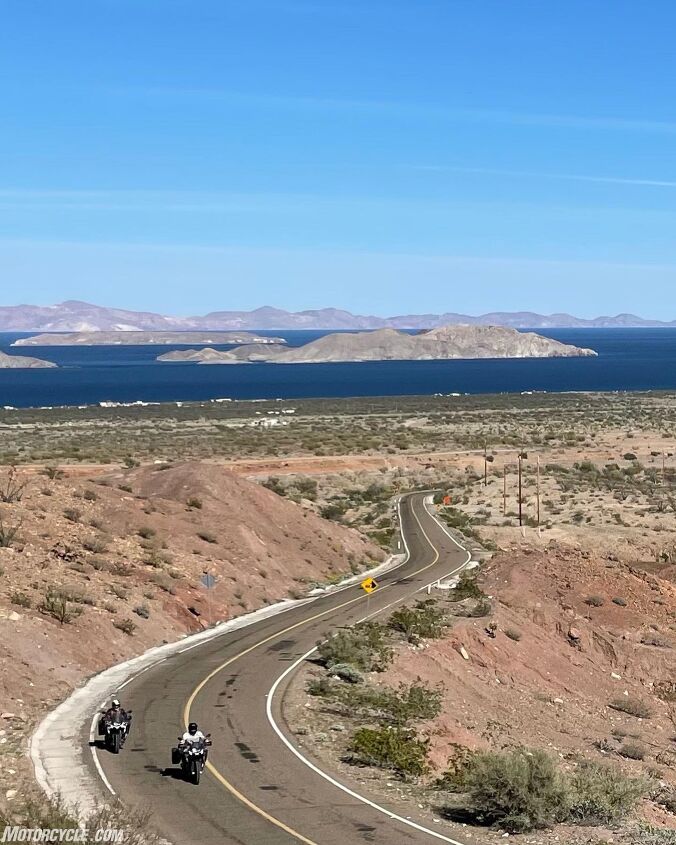Motorsports Racing News & Blog Articles
Three Gringo Geezers in Baja, California
An hour into the ride, we were already in trouble. We’d lost the main road and were stuck in deep sand and didn’t know the way out.
Forty miles north of Cabo San Jose, on unfamiliar bikes, on unfamiliar roads, in a country whose language none of us spoke fluently, three aging gringos at the extreme end of middle age were sweating and grunting and trying to keep their BMWs upright. With roughly 1400 miles of riding ahead of us.
And it was all my idea.
The motorcycle touring and rental company MotoQuest had set the plan in motion. I’d received word of a “transporter special.” They had some motorcycles that had been ridden to Cabo San Lucas from their Long Beach headquarters, and they wanted them to come home. At a greatly reduced rate, we could rent the bikes – two BMW F850GS and one BMW F750GS – and spend eight days riding them north, the length of the Baja California peninsula, taking our time and seeing the sights.
In short order, I found two willing accomplices. After an easy flight from Los Angeles and a pleasant overnight at the delightful Posada Real hotel, David and John and I awoke to a tequila sunrise and within two hours were on the road. The wrong road. Being swallowed up by the deep sand.
Matters improved quickly. We found the correct road and headed north, the bright blue Gulf of California on our right and forty miles of unpaved road ahead of us, with no clear plan for the day except to make it to La Paz before nightfall. An hour later, we were sipping cold drinks at The Shade at La Fortuna. Another hour on, we were eating fish tacos at Cole’s Dive Shop in Cabo Pulmo. Afternoon found us climbing mountain passes to the historic mining town of El Triunfo – once the largest town in Baja, and the first to be wired for electricity and telephones – with its separate cemeteries for Chinese and English.
The road was mostly free of traffic, but we had company. Roaming free were cattle, horses, sheep, goats, donkeys, and wild burros. Overhead were red-tailed hawks and the buzzards locally known as “zopilote,” while at road level we scattered roaming dogs, cats, chickens, and the occasional roadrunner.
That night we slept in La Paz, paying $35 for clean rooms at Hotel Salvatierra, and early the next morning, we continued north on Highway 1 as it cut inland. This was to be one of our longest road days – about 225 miles – and much of it was dull. But we got a good breakfast at friendly Café Esquisito, just outside La Paz, and a fine lunch in Santa Rita at Carnitas Jalisco, where three tacos and a cold soda cost under $4.
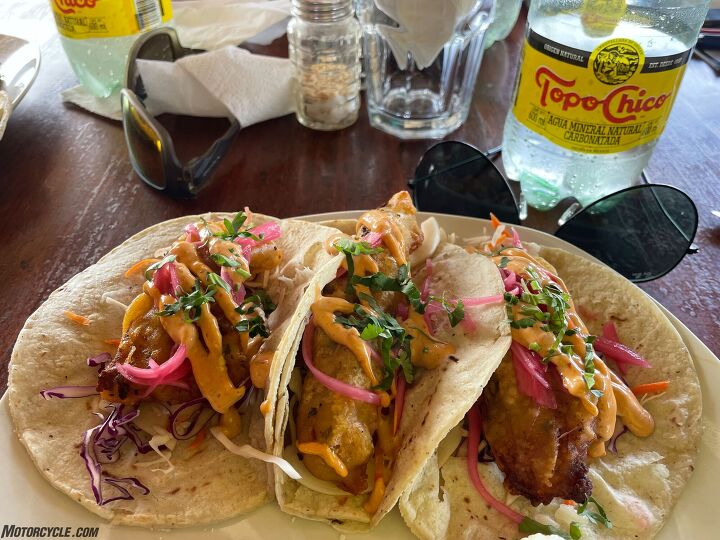
We didn’t do much fine dining, but the roadside tacos, especially the fresh fish tacos, were dirt cheap and delicious.
The dull road ended at Ciudad Constitution, as the highway headed east toward the Gulf again and soon began a series of gorgeous sweepers down to the sea through groves of tall, stately saguaro cacti. Soon, we were hugging the coastline, admiring the nearby islands of Montserrate and Carmen, and crossing into Loreto.
It’s a fine-looking town, full of history, the church on the central plaza dating from 1697. We got in a good long walk along the waterfront the next morning after extremely good coffee and pastries at La Route, facing the church, before setting out on riding day three.
Much of the day we were on or near the coast, enjoying moderate temperatures and captivated by the views, as the road rose and fell, of the bright blue water. Here the saguaro grew right down to the shoreline, and were joined by palo verde trees and an immense variety of other cacti, some of them unknown to us. We stopped at El Requeson, a sandy spit that reaches out into the water, and met up with the first of many groups of Mexican riders who’d crossed from the mainland via ferry from Mazatlan to La Paz.
A target for the day was the little town of Santa Rosalia, anomalous in Baja for its grid-like layout, French-style wooden buildings and the unusual Iglesia Santa Barbara, a 19th century iron church designed by Gustav Eiffel and originally located in Paris next to his famous Eiffel Tower. It was brought to Santa Rosalia during the late 1800s, when the town’s copper mines brought great wealth to its French owners. We had coffee and ice cream cones as we strolled around the pretty streets, then pressed on.
We’d seen many roadside shrines and memorials, some honoring saints, others remembering those killed in motoring accidents. As we passed in the shadows of the inactive volcano field known as Tres Virgenes, we stopped at what appeared to be a family cemetery. The individual mausoleums, some tiled and wired for electricity, were the size of small homes.
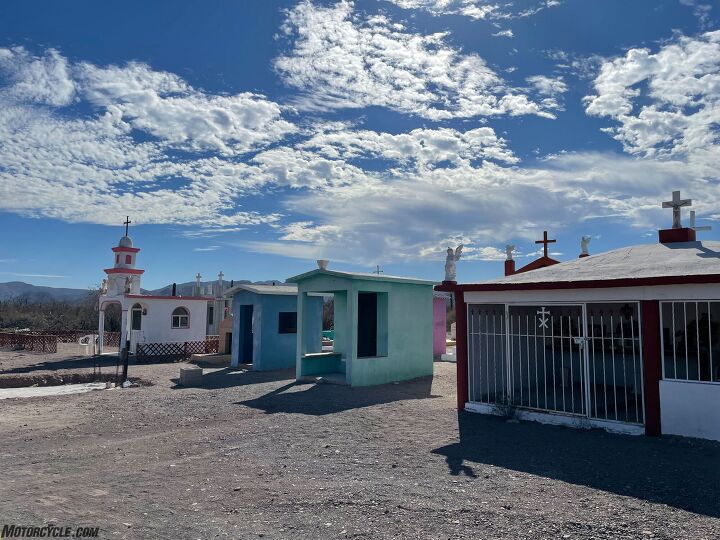
Roadside shrines and memorials, and family cemeteries, illustrate the Mexican tradition of honoring the dead.
Dark found us in the colonial town of San Ignacio, in a mountainous region in the center of the Baja Peninsula. We ate dinner in the classic zocalo, with a stone church at one end and a music pavilion at the other. The area is known for its thermal baths, but we were there for the whales.
After securing rooms at Rice and Beans, a rudimentary hotel favored by fans and participants of the Baja 1000, (the dining room is adorned in Baja racing regalia, with off-road racing legend Johnny Campbell especially well represented) we made reservations to go the following morning to the San Ignacio Lagoon, to ride on a panga boat into the waters where migrating gray whales gather in the winter and spring to birth and train their offspring.
Baja being Baja, we had already encountered the occasional minor difficulty. We’d been caught by surprise a couple of times by unannounced “topes,” the speed bumps often found entering and leaving little towns. One morning the only place serving coffee nearby had brewed up a big, tasty-smelling pot. But they were out of cups. A few days later, the “24-hour” Oxxo convenience store didn’t open until 7am. Across the street was a 7-11. They had cups! But no coffee, because their hot water heater was broken.
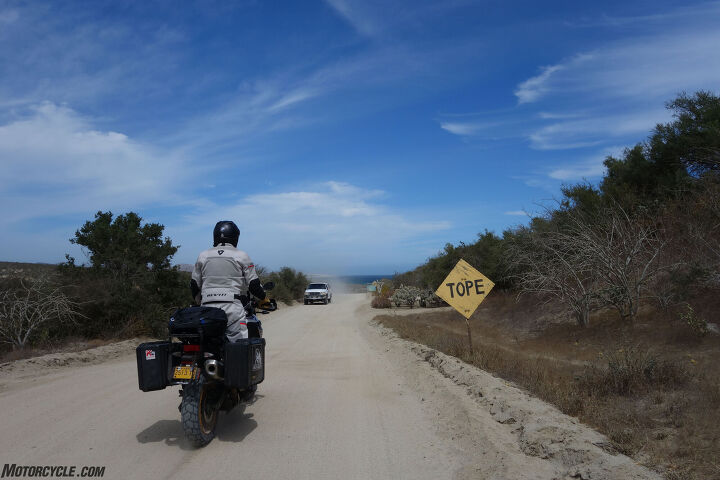
Sometimes the crude speed bumps known as “topes” are announced ahead of time, and sometimes not. They’ll certainly wake you up if you’re not paying attention.
But that night I was awakened by the sounds of someone being sick, violently sick. The next morning I found it was one of our trio, with a terrible case of the classic Baja belly. He was too weak to get out of bed.
The timing was good, in the sense that this day was the only one we hadn’t scheduled for riding. So he could spend the day recovering. But it was terrible, in the sense that he would miss the whales.
But he missed a lot. We rode our bikes the 45 minutes down to the Pacific Coast, much of it on dirt, where we met up with our guides from Ecoturismo Kuyima. We were fitted with life preservers and sent, six passengers at a time, into the lagoon.
The excursions are strictly monitored. Only a certain number of boats are allowed in the lagoon at a time, and only for certain lengths of time, and only in certain waters and at certain times. We’d paid $80 each for the tour. At first I wondered whether we’d been fleeced. Except for another boat far in the distance, we seemed to be the only creatures out there.
It took our boatman about half an hour to locate a pod of whales that were willing to visit with us, but find them he did. He shut the boat off, and we bobbed in the water for a few minutes, before the first of the massive gray whales breached the surface – gently, quietly, and right next to our boat. For the next forty minutes, we were treated to amazingly close contact with the huge creatures as they rose to look at us, then rested alongside our boat and allowed us to stroke them.
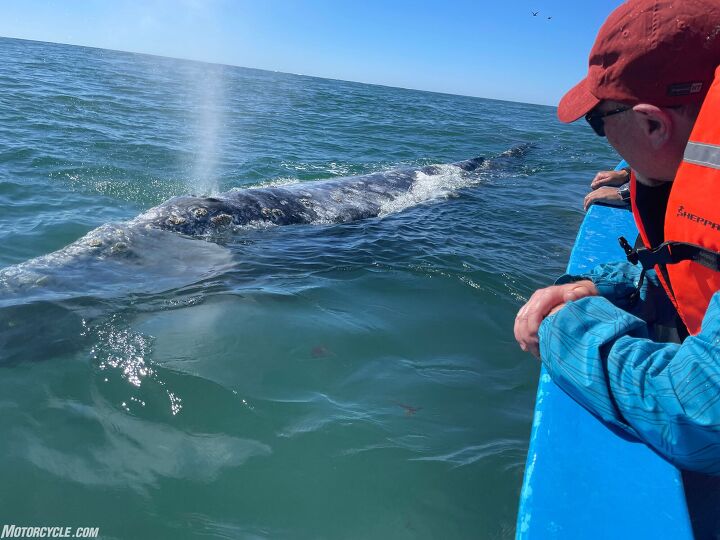
Gentle mother whales and their calves come to visit the panga boats that bring curious tourists into the water. They’re playful and patient. And also huge.
Friends had described their whale encounters as spiritual experiences. I had scoffed. But now I understand. The visit was magical.
Our friend was slowly recovering. We told him the whale visit was a complete waste of time, and he was lucky to have missed it. When he didn’t believe us, we showed him our pictures and videos of the experience. Was this a favor? Now, he was sick to his stomach and sick with envy, too. We all made a mental note to start packing Imodium and Pepto-Bismol, or their equivalents, in our first aid kits.
After another pleasant evening in the San Ignacio zocalo, and a breakfast of pancakes and bacon (for some reason, this combination is on every menu in Baja, as if someone made the announcement that it’s the preferred meal of all travelers), we were on the road again.
It was a long day, filled with stretches of straight, dull road. The hours were brightened by sightings of more red-tailed hawks, as well as a few osprey, and the usual menagerie of wandering livestock. (We were often warned of these by cars coming the other direction with their emergency flashers blinking – the signal in Baja that a road hazard is ahead.)
We had already come upon multiple military checkpoints, where we were usually asked where we’d come from, and where we were headed, before being waved through. Now we arrived at a military base, a large complex marked at its entrance and exit by decommissioned Harley-Davidsons on pedestals. We stopped at the curious mid-century-modern Halfway Inn hotel for coffee and snacks before continuing the long ride north.
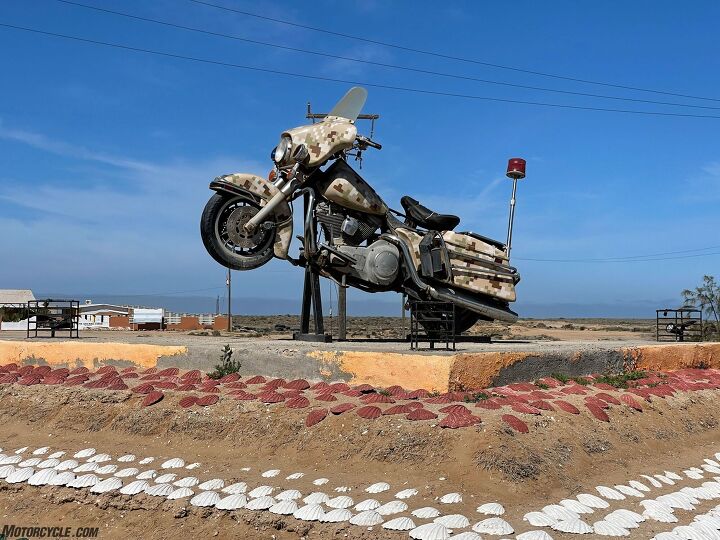
It looks like the tomb of the unknown Harlista, but this crusty cruiser was placed at the entrance to a military base.
We’d been warned about fuel availability. Near the cut-off where a spur of Highway 1 veers off toward Bahia de Los Angeles, we were amused to see men selling gasoline by the side of the road, out of barrels. Luckily we’d filled up earlier and didn’t need their services.
But we needed the beach. The days had gotten hotter since we left Cabo, and even the very ventilated kit I was wearing – Rev’It’s Dirt Series jacket, pants and gloves – couldn’t keep me cool. But the end of the ride dropped us down a swoopy road with tantalizing views of blue. We booked rooms at a hotel called Costa del Sol, then headed straight for the gulf, where we dunked into the refreshing water.
As dusk approached we rode the unpaved two-track out to Punta Gringa, watching the sun go down and getting comically stuck on the deep pebbly beach.
The next morning, we ate our requisite pancakes and bacon, retraced our path back to the main length of Highway 1, and continued north, turning west toward the sea again at the southern end of Highway 5. What used to be a long and dusty unpaved road as far as San Felipe was now brand-new tarmac. We made the stretch to Coco’s Corner, a legendary Baja stop operated by the legendarily colorful Coco, with plenty of time to visit and cool off with sodas. Coco, who at 85 was forced to move to a new location to be near the new road, had already festooned the inside of his shop with dozens of pairs of ladies’ underwear, seemed very much in his element.
And I was in mine. The riding north along the coast was sublime, one gorgeous bay after another, cacti growing down to the sand, blue water dotted with artistic islands. Lunch was fresh fish tacos at Alfonsina’s, on the Bahia San Luis Gonzaga. Afternoon drinks were, less successfully, at the roadside bar known as Cow Patty. The Mad Max décor was exceeded by the Mad Max clientele. My notes for the visit read, “Horrible in the extreme.”
We hit San Felipe at sunset, and found it even more clotted with tourist traps and cheap T-shirt shops than we remembered from our earlier visits. (I, who hadn’t been there since the 1970s, found it unrecognizable.) But we snagged good clean rooms at the Hotel Don Jesus, and rested up well for what was to be our last night on the road.
Were we showing our age? Maybe. The next morning broke bleak with the threat of record rainfall by the end of the day. With nowhere obvious to stay between San Felipe and Ensenada, we decided to skip a planned assault on the unpaved Compadre Trail and high-tail it for a border crossing at Tecate.
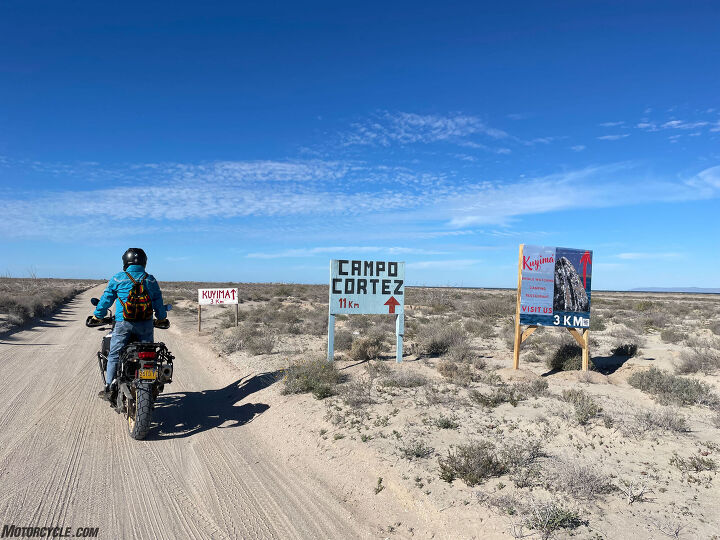
Most of the dirt roads we took, like this one to Laguna San Ignacio, were well maintained and easy to ride.
But even high-tailing requires the occasional pause. We slowed for the expected military checkpoints and livestock crossings, and stopped at the high pass near Ojos Negros to enjoy the cooling temperatures and visit a particularly beautiful roadside shrine amongst the unexpected oak trees and longhorn cattle.
We descended one of the prettiest roads of the whole trip, then ate our last Baja bites as we took the Highway 3 bypass and entered the glorious Valle de Guadalupe, the wine region that the late food and travel celebrity Anthony Bourdain declared was Mexico’s “little Tuscany.” The late lunch at La Robleza, the restaurant at the Vina de Liceaga winery, was the best food we’d eaten since Cabo.
The high-tailing got us across the border before sunset, and through the magnificent twisties going west along Highway 94 through Dulzura and Jamul. We hit La Jolla after dark and holed up for the night, waiting for the rainstorm that never came.
It was a short hop to Long Beach. We’d put 1455 miles on MotoQuest’s BMWs and on ourselves, without any breakdowns – mechanical, physical or psychological. I think we were all tired, and I know we were all determined to make the ride again as soon as possible.
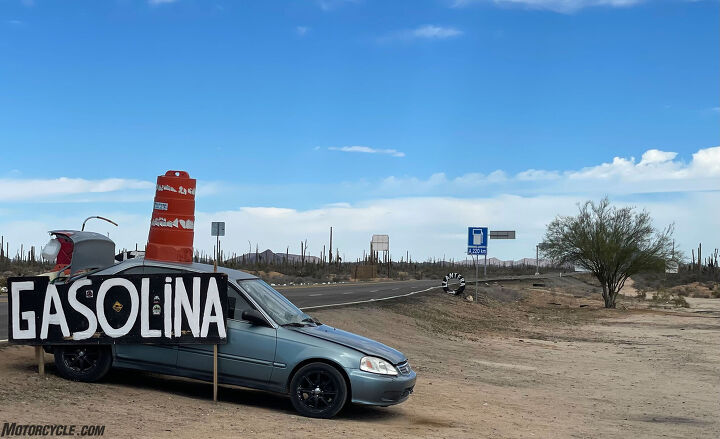
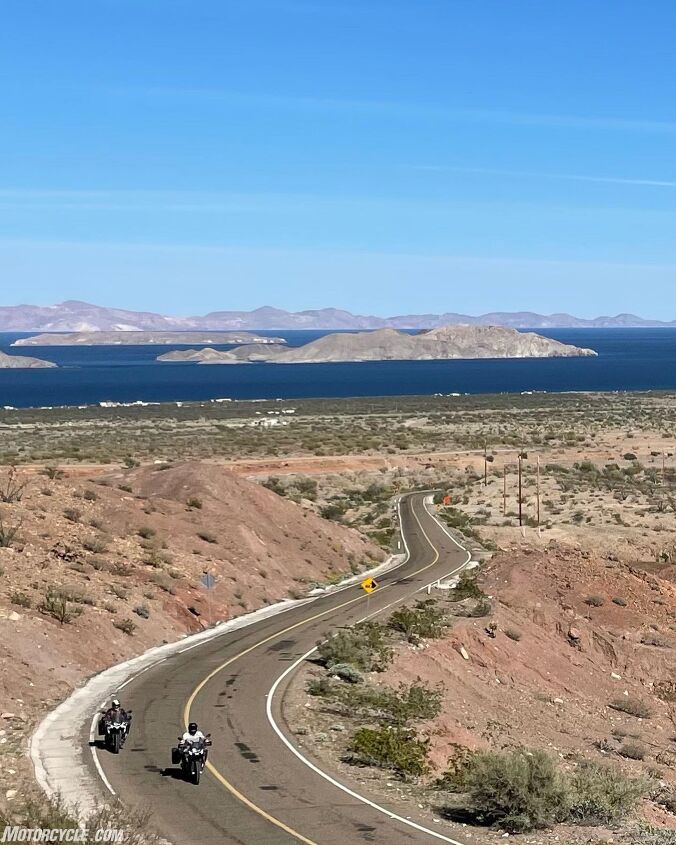
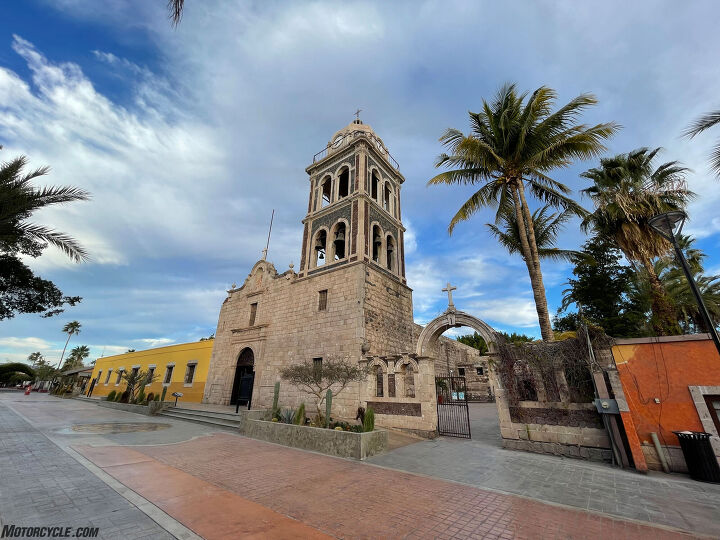
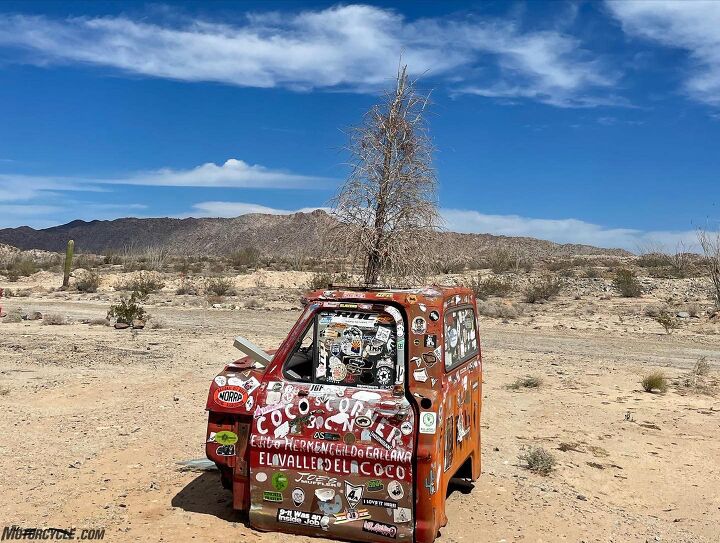
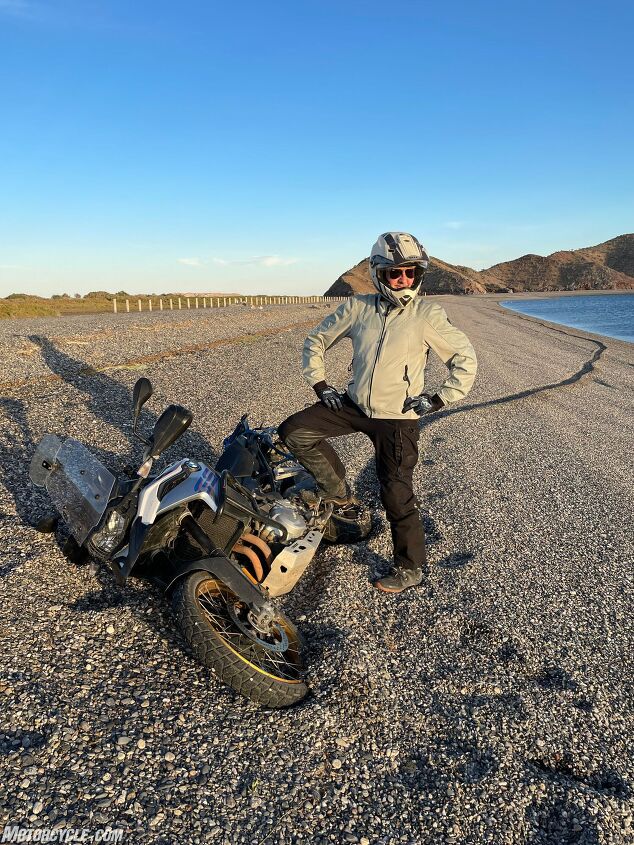
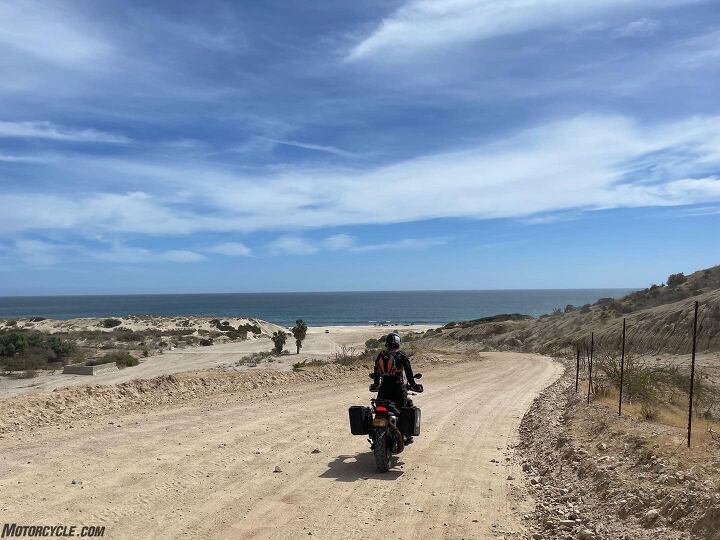
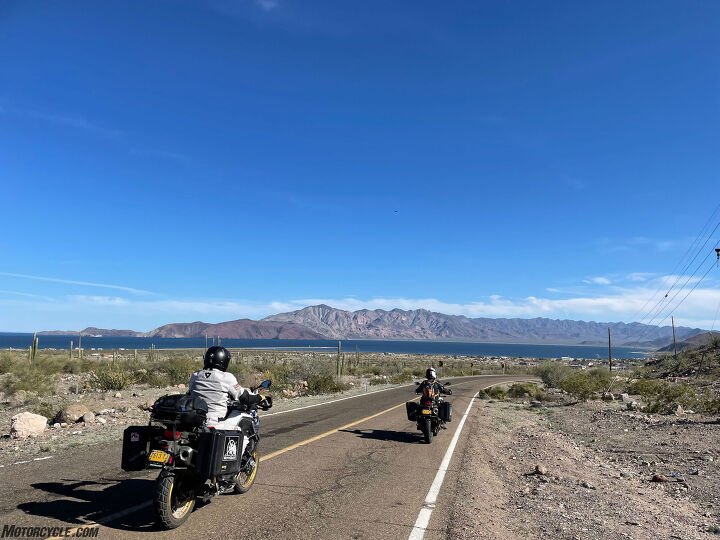
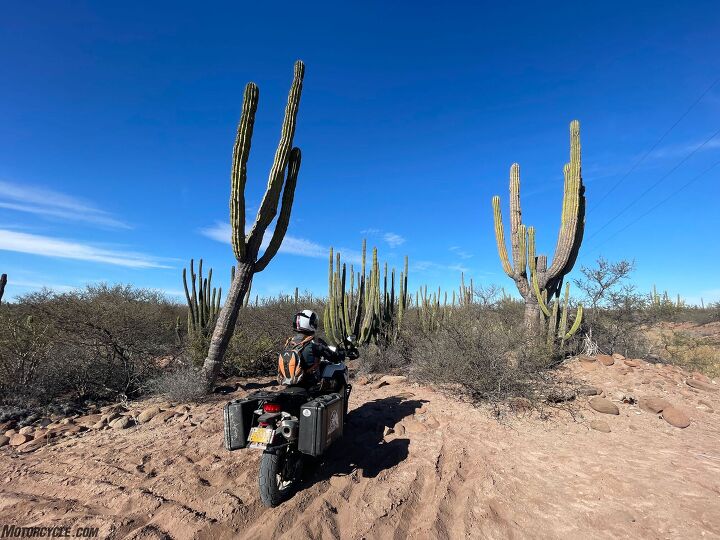
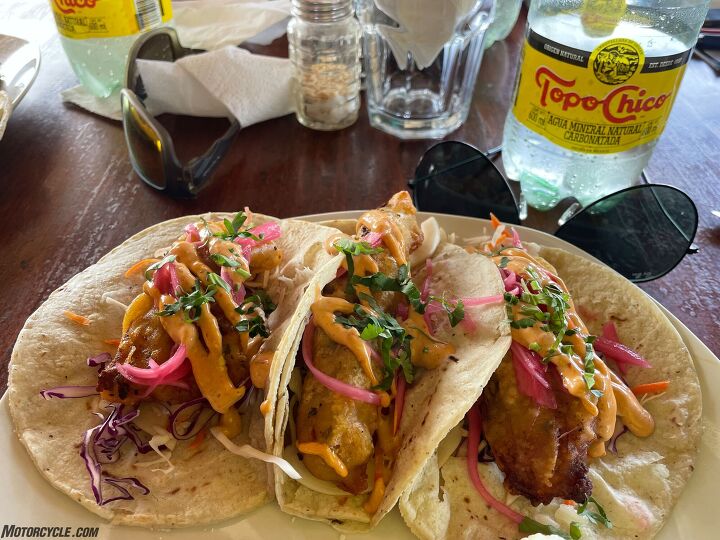
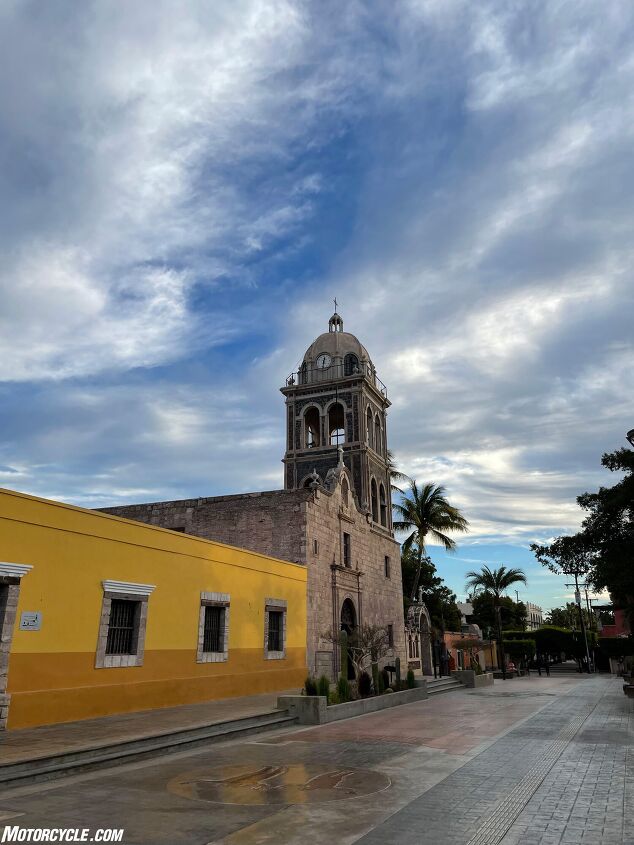
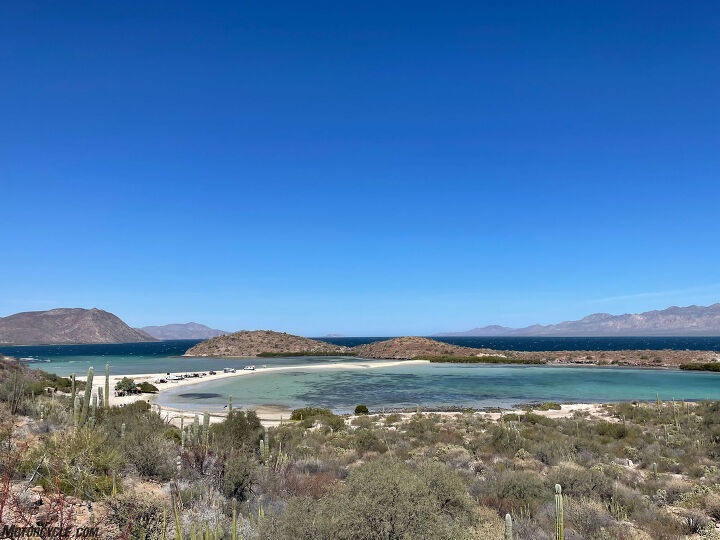
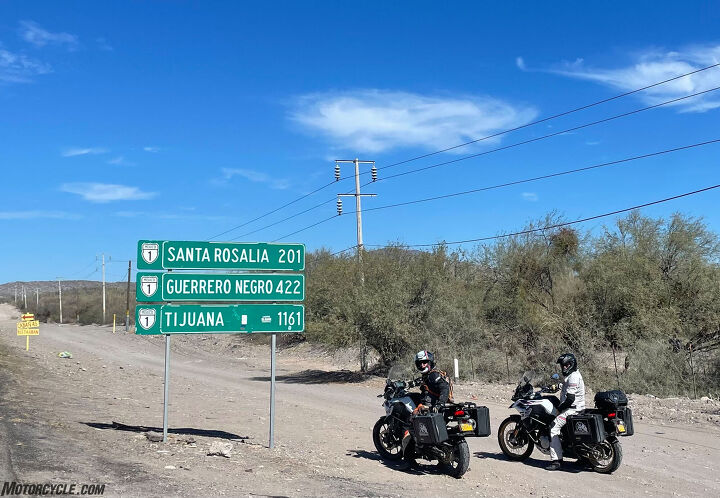
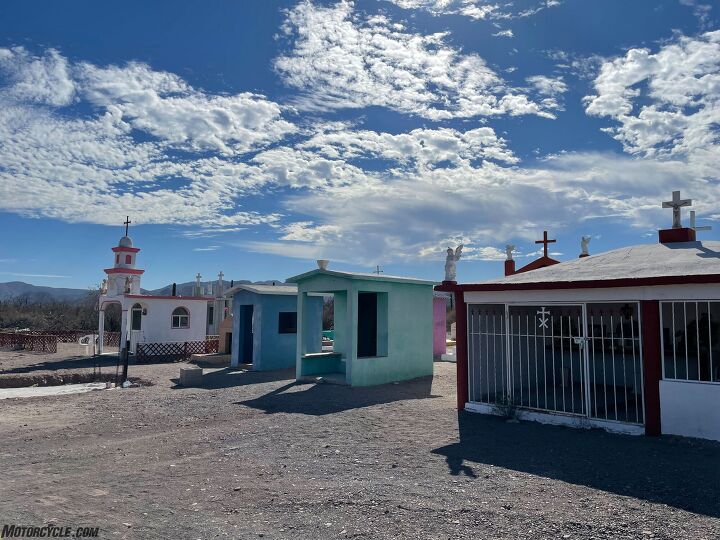
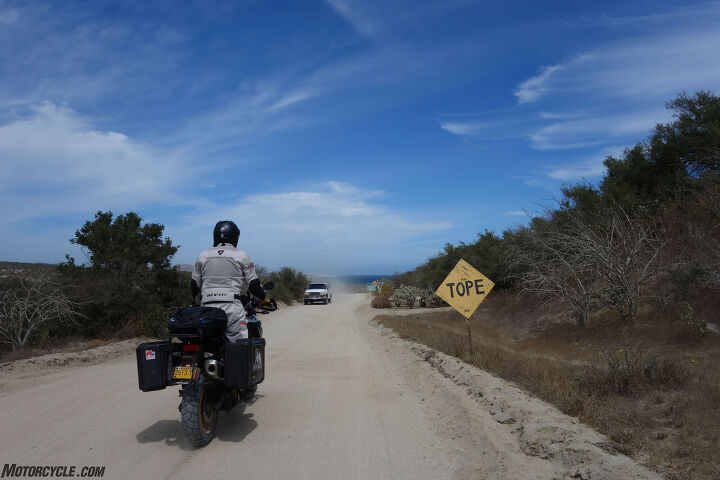
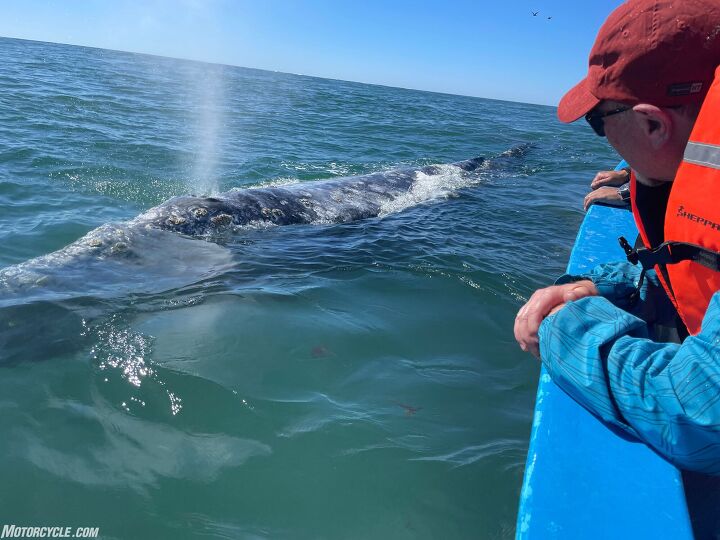
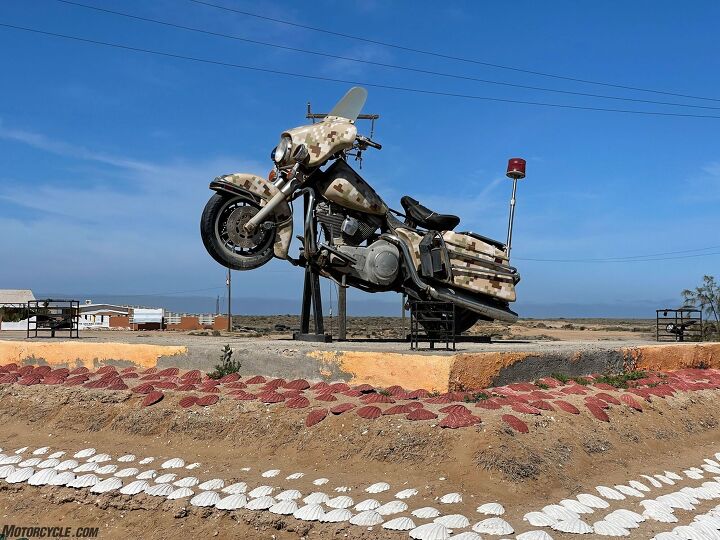
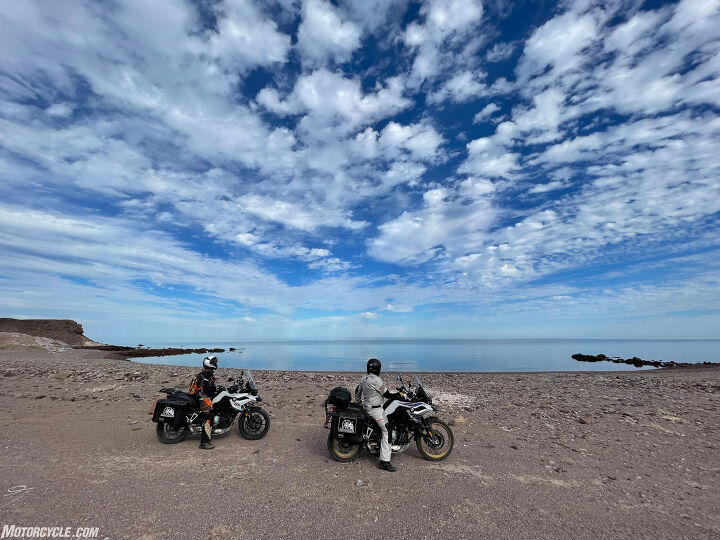
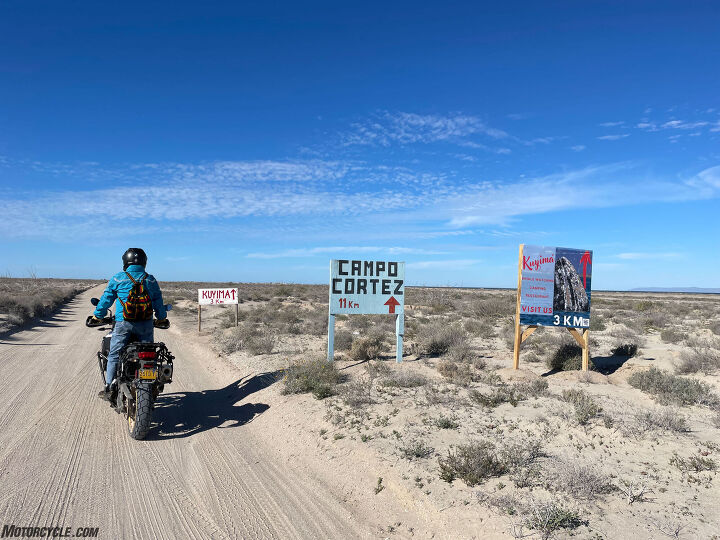
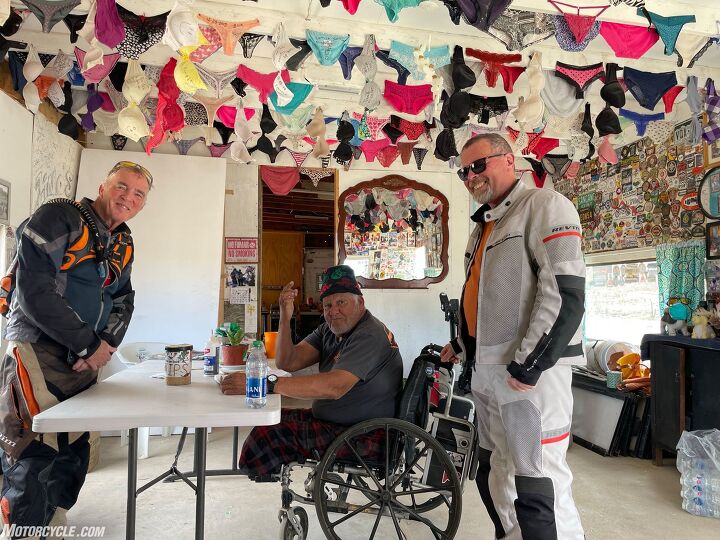
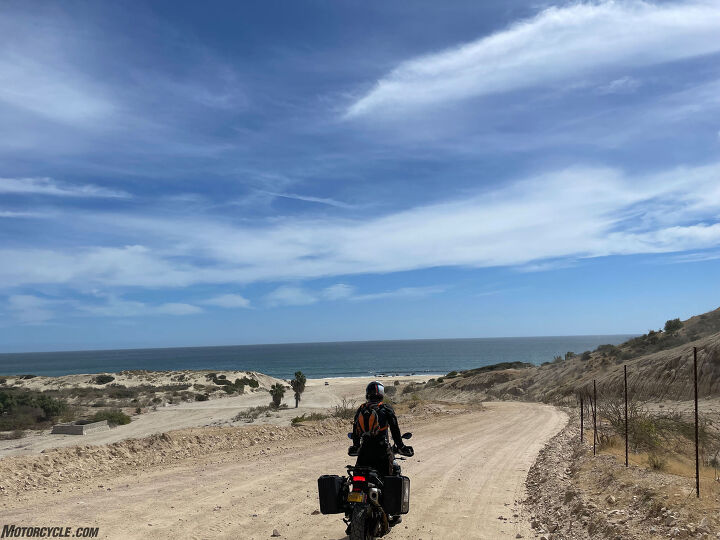
Become a Motorcycle.com insider. Get the latest motorcycle news first by subscribing to our newsletter here.
The post Three Gringo Geezers in Baja, California appeared first on Motorcycle.com.
Copyright
© Motorcycle.com


